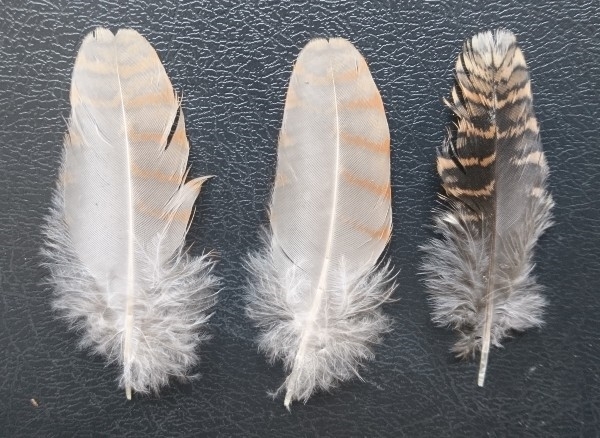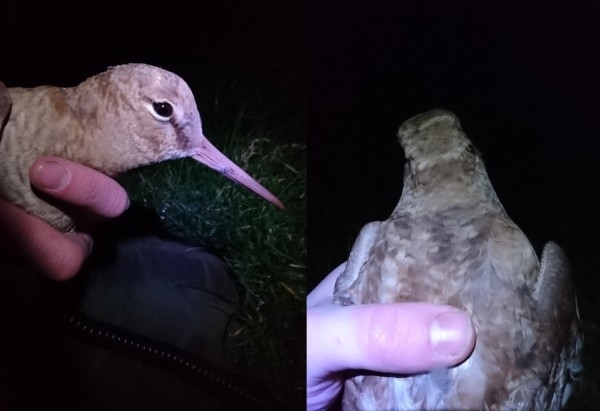While there’s lots of subtle variation in woodcock plumage, it is very rare to see white or leucistic birds. Chris Heward describes an encounter with an unusual ‘blonde’ woodcock caught last week.
There’s certainly a large amount of variation in woodcock plumage. Among the woodcock that I catch as part of our long-term ring-and-recapture study, I see all kinds of variety. It is not unusual to find birds that are ‘particularly gingery’ or ‘particularly grey’ and there’s a range of theories as to what this may represent. As a general rule of thumb, youngsters tend to be plainer, with less pale or grey mottling on the top of the wing, but some of the variety may be the result of undocumented differences between breeding regions.
It is not that uncommon to see woodcock with the odd white feather. Andrew Hoodless told me of a bird he caught in which three of the primary feathers were pure white. There are photographs and old paintings of ‘pied’ woodcock in which much large areas of the plumage are white.
A bird with aberrant white or pale plumage is commonly known as leucistic. A true albino shows a complete lack of pigment, including in the iris, causing the animal’s eyes to appear red. Leucistic animals, on the other hand, show a reduced or partial expression of pigment which may manifest as white colouration (but a normal-coloured eye), pale colouration or plumage/fur mottled with white.
In mammals and some birds – species that are typically brown, grey or black - colour is dictated by different types of the pigment melanin. In some brightly-coloured birds, however, different classes of pigment such as carotenoids are responsible for vivid reds and yellows. Mutations causing some pigments, but not others, to be produced can result in a wide-range of colour morphs. Selective breeding of domestic birds demonstrates how varied these can be, but these morphs are rare in the wild – usually because they come as a disadvantage to the bird itself. Feathers lacking in pigment are not only more conspicuous, but they are also weaker and more likely to abrade.
Of all the woodcock I have caught since I started studying the species (around 700 birds), I’ve never seen anything more unusual than a few white covert feathers. Until last week that is when, on our annual Cornish field trip, I caught a very strange woodcock. The parts of the feather that are usually black were replaced by a very pale pearlescent grey, while the brown markings where similar to those of a normal woodcock, only slightly paler. This was the case for every single feather of the bird, giving the overall impression of a ‘golden’ or ‘blonde’ woodcock. The combination of orange-brown and a silvery white was more reminiscent of a barn owl than a woodcock!

The blonde woodcock shed two covert feathers in the net when caught. Here they are compared to a similar feather from a typical woodcock.
I felt incredibly lucky to have seen such an unusual bird. It was ringed, weighed and measured, as per our usual protocol, and released after a quick photo. Interestingly the bird was an adult (hatched 2017 or earlier) and must have managed to survive at least 18 months despite its unusual colour scheme.
There is not a great amount of literature on woodcock pigmentation, but for most waders colouration appears to be the product of different types of melanin, rather than the carotenoid pigments responsible for the bright colours of some songbirds. In particular, ‘eumelanin’ produces black, dull browns and greys, while ‘phaeomelanin’ produces chestnut browns, oranges and rufous tones. I suspect my ‘blonde’ woodcock was unable to produce eumelanin, hence the lack of black, but was producing normal levels of phaeomelanin. An alternative explanation may be that all forms of melanin were being expressed at a lower level. Whatever the explanation, it was certainly the most memorable woodcock I have caught to date.

These pictures, taken on a windy night with a camera phone, don’t do this special bird justice but give some impression of the buffy-gold plumage.